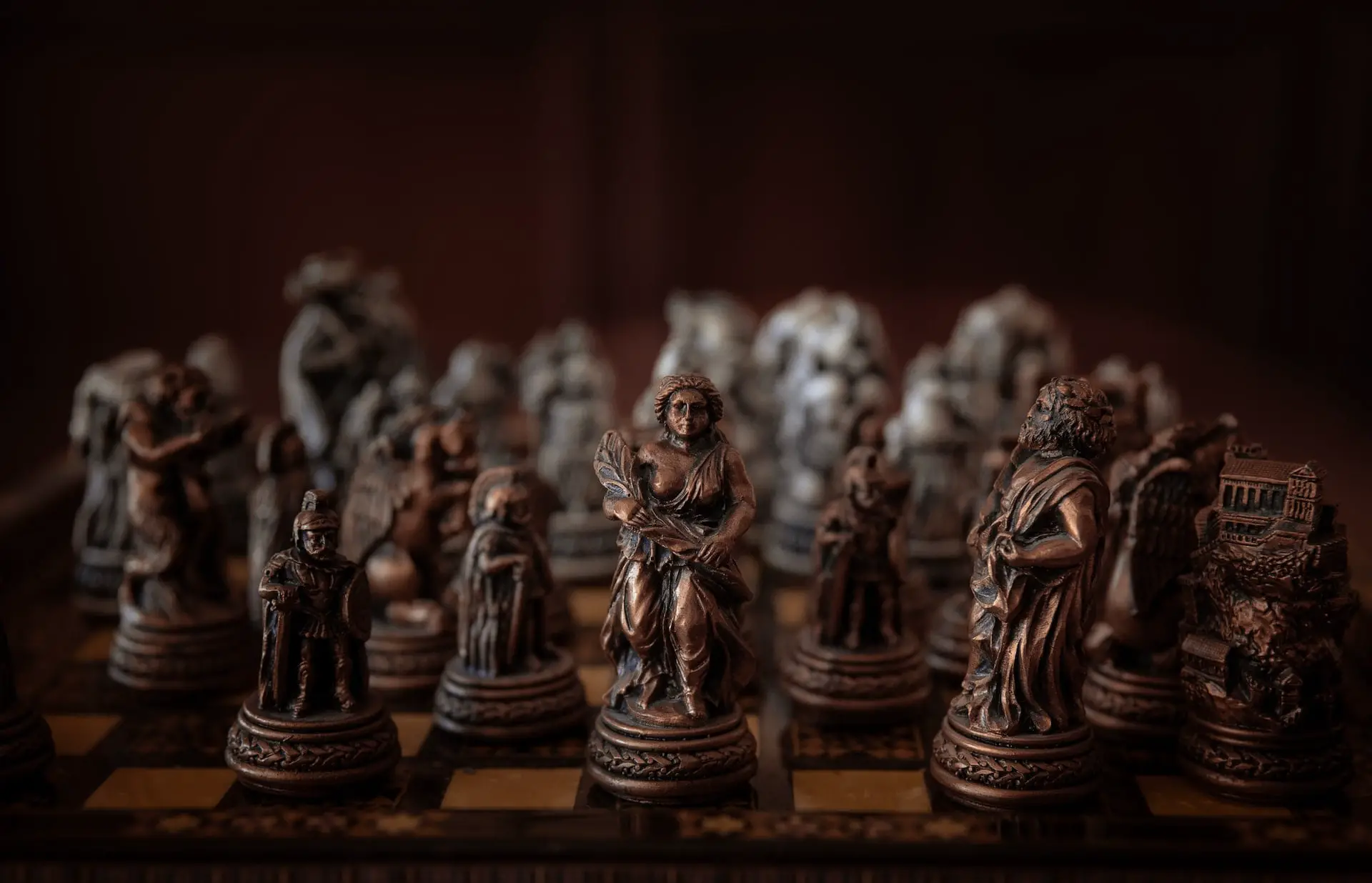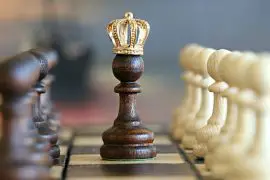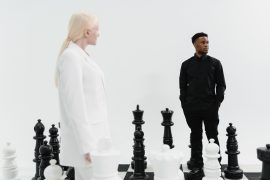What Do the Different Chess Pieces Symbolize? Why is it important to know?
Contents
What do the different chess pieces symbolize? Yes, each chess piece is not random game pieces. They all represent a certain character. It is important to understand the meaning of the chess pieces you play as it will help you understand how they work.
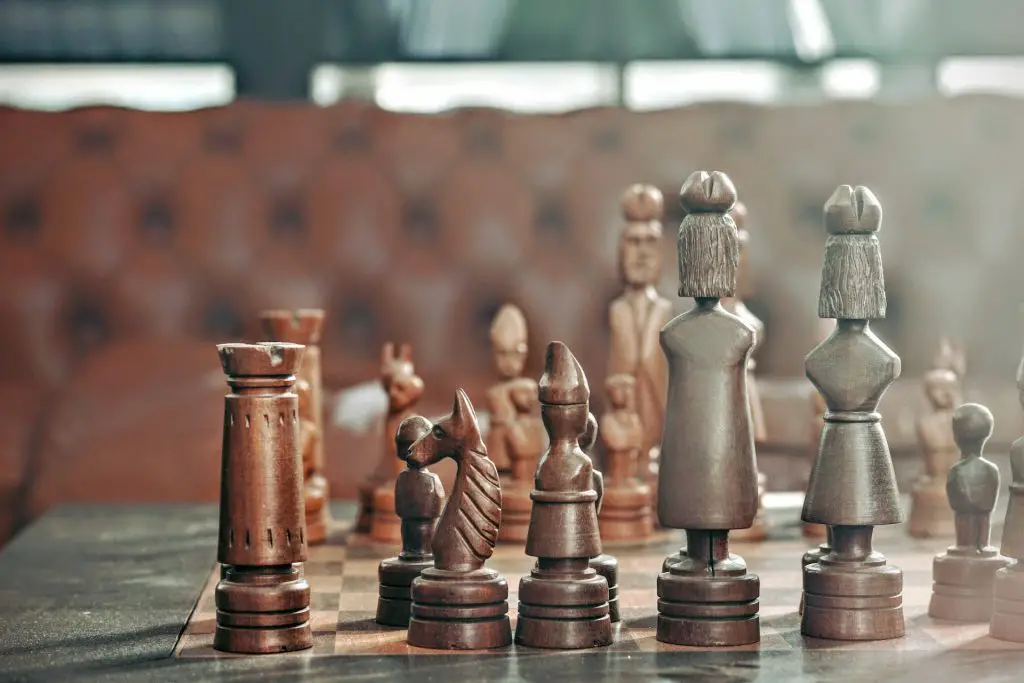
Chess is an ancient game. It has been an interesting strategy board game for many centuries. One reason why chess is popular among people is the deep symbolism behind chess. There is more to chess than the eyes can see.
There are six different chess pieces on a chess board in different numbers. These pieces are the King, Queen, knights, bishops, rooks and pawns. Each has its own symbolism behind them. They each have their own value and represent something unique. They all have their own roles to play in the great war of chess.
What Do the Different Chess Pieces Symbolize?
King
The King is the most important piece in chess. The King must be protected at all costs. The King is the ruler and the most valuable person in any kingdom. In chess, the kingdom is at war.
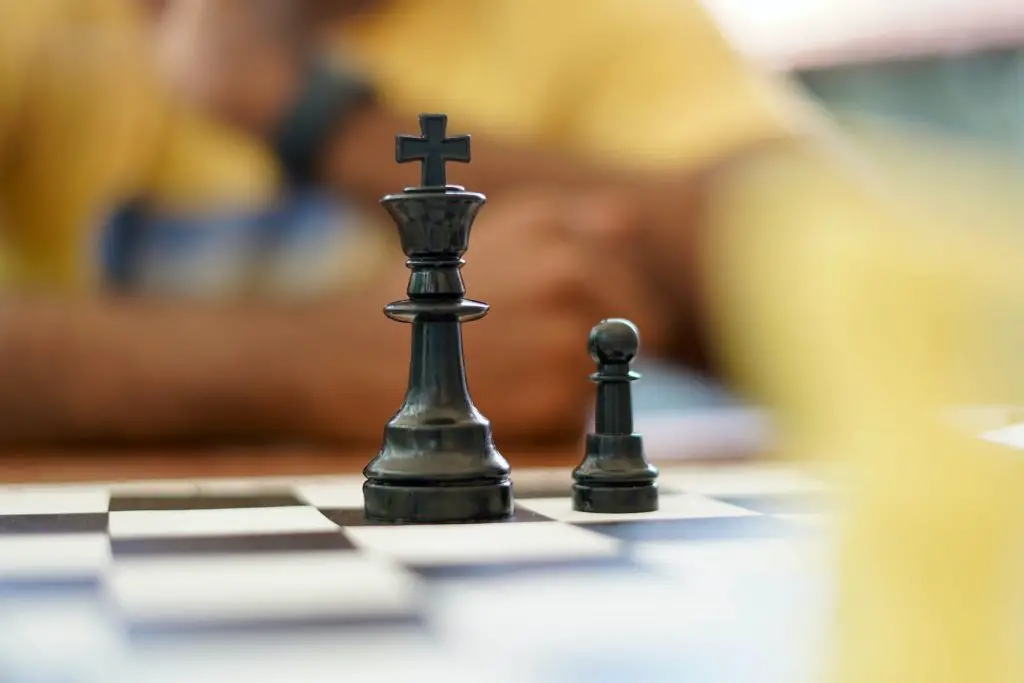
So the King here does not engage in most of the battle; rather, it is the piece with limited movement and also a piece that must be watched and protected. The King can only move one space at a time. If the King is in danger, then the kingdom is lost, and you have lost your game too.
The King is often the biggest piece in chess. It is represented by the cross on top. Many designs of the king piece in chess may vary slightly, but there is always a crown shape with a cross. The position of the King in the center of the chessboard also shows its importance.
Interestingly, despite the King is very important, its movements are very limited. But when you think about it, this is the case in the battles of medieval times too. When the kingdom is at war, the King is not sent to the forefront but resides in a protected fortress with a special army of knights to guard him. His importance prevents him from moving as he wishes. But though his moves are limited, the King is the only piece that can move many times in any direction he wants.
Queen
The Queen is the second-largest chess piece on the board and has a crown shaped differently than the King’s. The shape of the crown and the Queen may vary slightly in every chess set, but they are easily recognizable as the Queen.
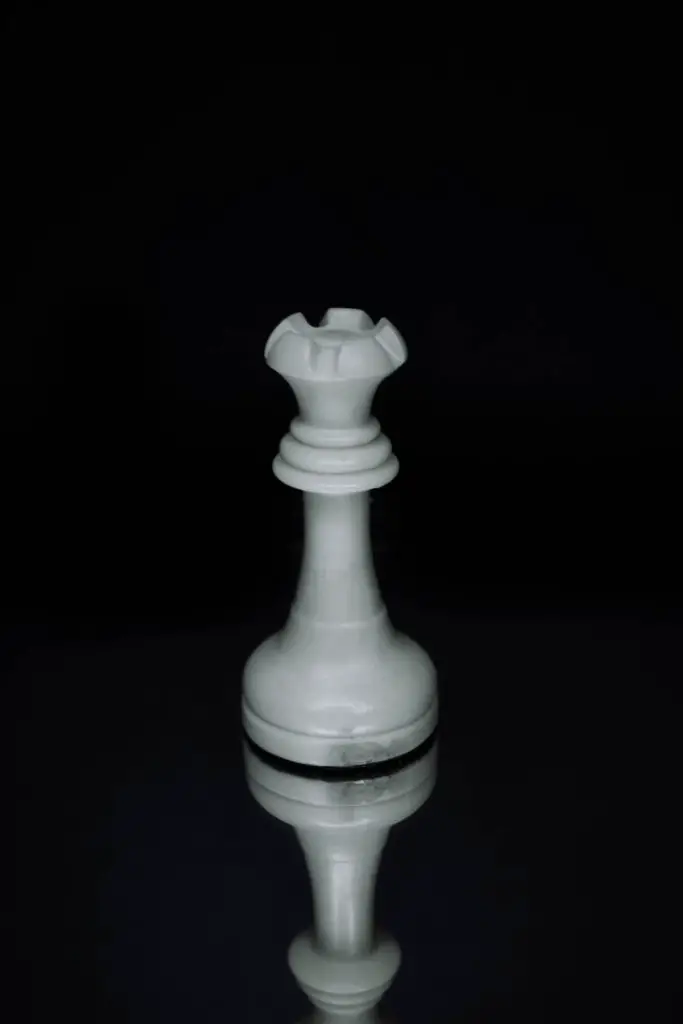
The Queen is the only chess piece that represents a woman. But she is inarguably the most powerful chess piece. She stands right next to the King and is the most important piece used to protect the King and to save you from losing.
The Queen is not just any woman. She is directly involved in politics and makes all decisions to protect her King and the kingdom.
The Queen is the strongest piece in terms of movement and value. She is worth 9 points and can move linearly and diagonally in eight different directions. Only on the third rank, the Queen can move one space to the left or right.
The Queen is the only piece that can skip over obstacles and capture the rook. The Queen has unique defensive abilities. When she is threatened, and she is not the closest piece to the attacker, she can capture the threatening piece of the opponent.
Rook
The shape of a rook looks very similar to the stronghold towers of a castle or citadel. The rook, therefore, represents the castle of the King and the Queen. The two rooks being placed at the corners on either side of the King and the Queen represent the protective wall that keeps the royals safe.
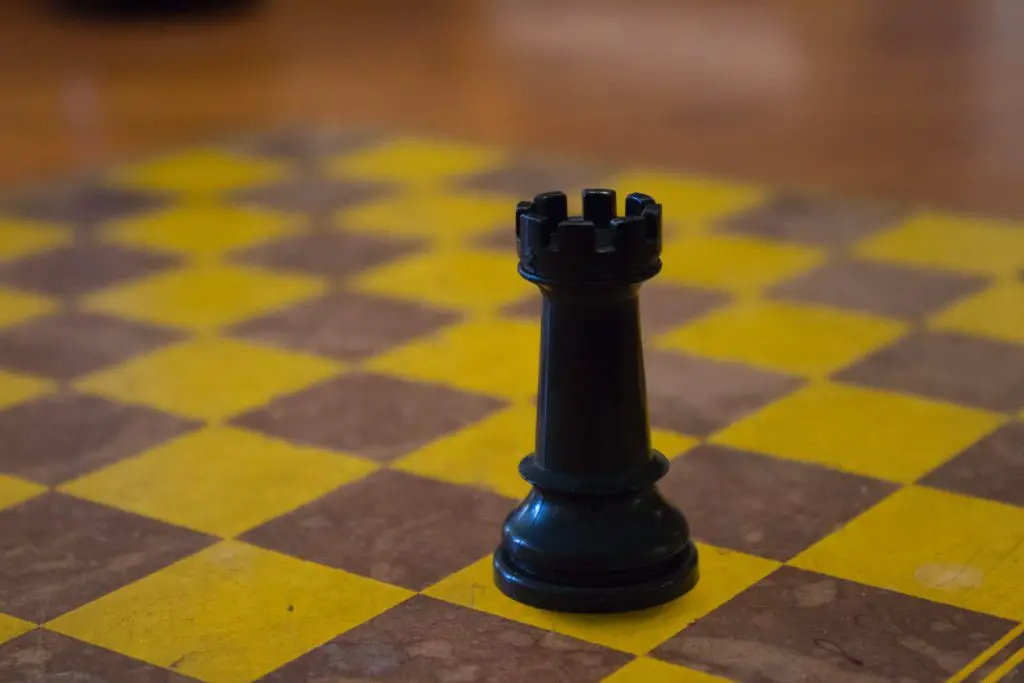
The rook also allows a special move called ‘castling’ where the King and the rook are switched places in order to protect the King. The King is also kept behind a fortress of rooks and pawns.
In medieval times, the castle is an important factor in defining the strength of a kingdom. Castles are used to defend the country and the royals from invaders and revolts. In chess, rooks are powerful defenders, and unlike real castles, rooks can move.
The rook is the second strongest piece. It can move horizontally and vertically. The rook is worth 5 points, which makes it stronger than the bishop and half as strong as the Queen.
Bishop
There are two bishops in chess for each side. It can move diagonally as well as vertically and horizontally. The bishop is known as the ‘wisest’ and ‘strongest’ of all chess pieces.
The bishop is easily recognizable by the top, which is shaped like a miter. A miter is a traditional headdress worn by bishops. In most chess sets, there will be an indentation on top of the bishop.
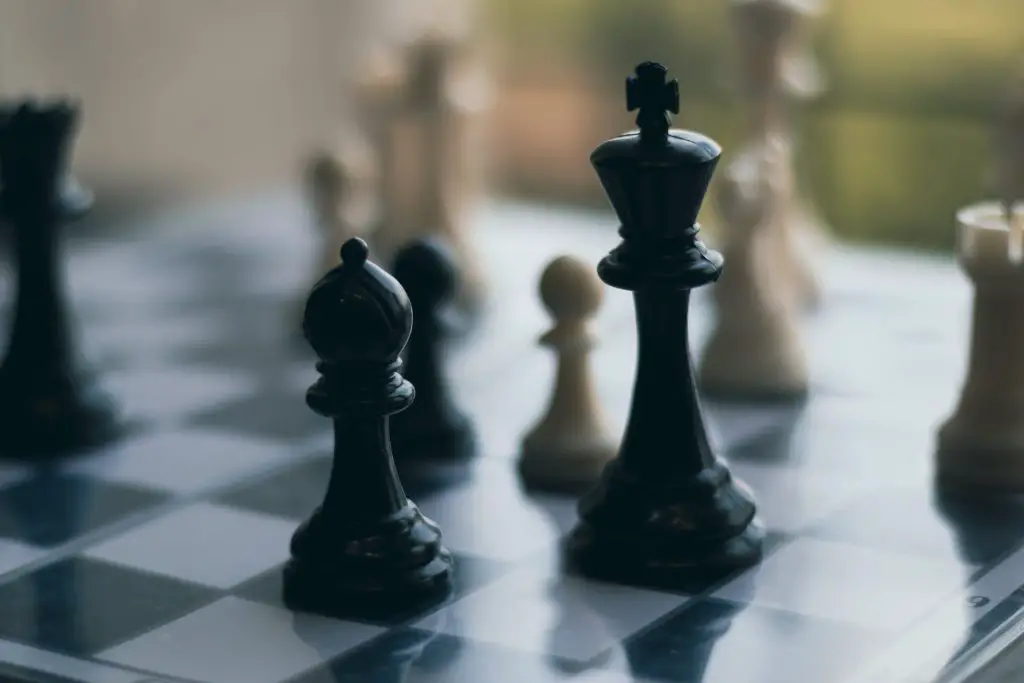
The bishop symbolizes a significant member of the church. It can also be meant to represent religion and the role it played in the medieval era.
In the Middle Ages, the church was a very important part of life and royal courts. Most royal courts had representatives of the church among them. The church representative acted as advisories to the King in all political activities. So its importance is shown in its position, being placed right next to the King and Queen.
The bishop is worth 3 points. It is worth more than a knight but less than a rook.
Knights
The knight is a piece that is shaped like a horse. It symbolizes a knight of medieval times. A knight is a soldier who is given a special honor and title for a show of exceptional bravery and loyalty to the King. Knights are also given castles and vast regions of land to rule.
The primary duty of a knight is to protect the King, even at the cost of his own life and to serve the kingdom. A king of medieval times would usually have many knights to serve him. But in chess, we have only two knights per side.
The knight is the only piece that can jump over other chess pieces. It moves in a unique L-shaped movement and is worth 3 points in chess. The knight is sometimes vulnerable to attack due to its type of movement, but it can also be a strong piece in the right situations.
Pawn
The pawns are the smallest, least significant and least valuable pieces in chess. Their design is simple, and you can easily recognize a pawn due to its small size.
The pawns symbolize the foot soldiers in chess. Or they also represent armed pheasants. There are eight pawns per side. They may be the weakest pieces, but collectively, they form the backbone and body of the army that protects the King from capture.
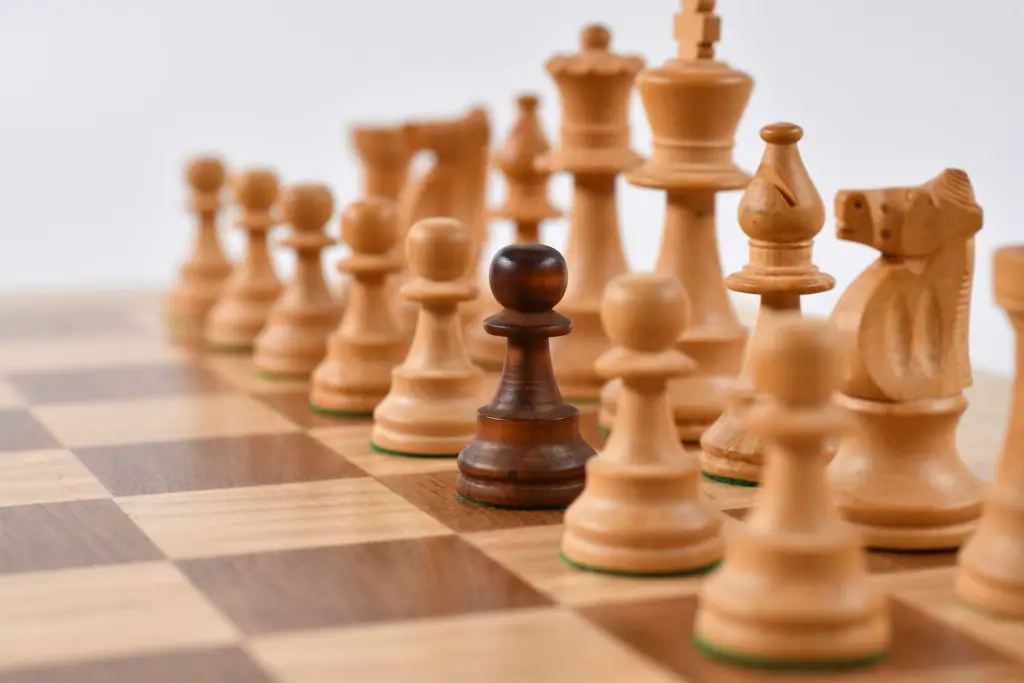
The pawns or the foot soldiers are the ones that are sent out to the heat of the battle. Often, they are sacrificed, killed and captured.
But interestingly, once a pawn is brave enough to reach the other side of the board, it is ‘promoted’ to a stronger chess piece like a knight.
The pawn is worth only one point in chess. It can move only one piece at a time.
Pawns could also symbolize the common innocent people of any kingdom that are often sacrificed and exploited in the name of war.
The chessboard
The chessboard represents the battlefield. The two different colors represent two different kingdoms at war. It is possible that the white represents the ‘good’ kingdom and the black represents the ‘bad.’ The side on which you start your game represents your homeland.
What Do the Different Chess Pieces Symbolize? Summary
It’s important to understand what each chess piece represents as it will help you work out how they work and how important they are in the game. All the chess pieces represent characters in a medieval-era kingdom, from the King, Queen, and castle to the common foot soldiers. They each have their own value in chess according to their importance in the context of war and social hierarchy.

